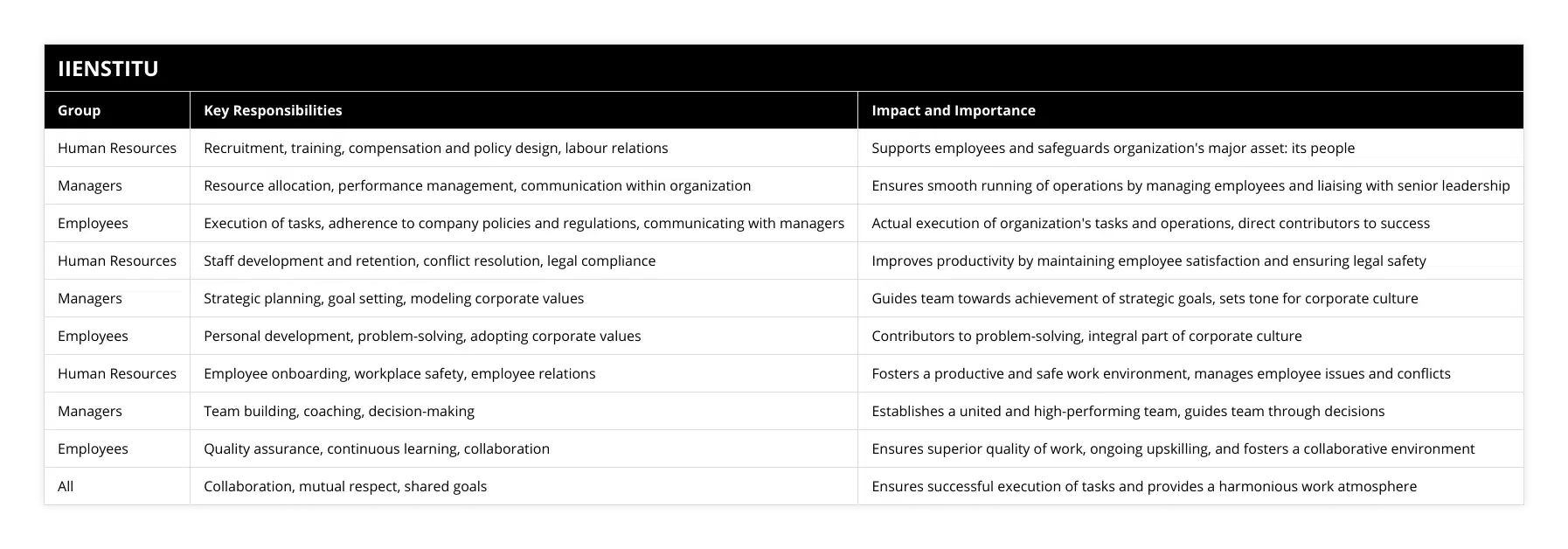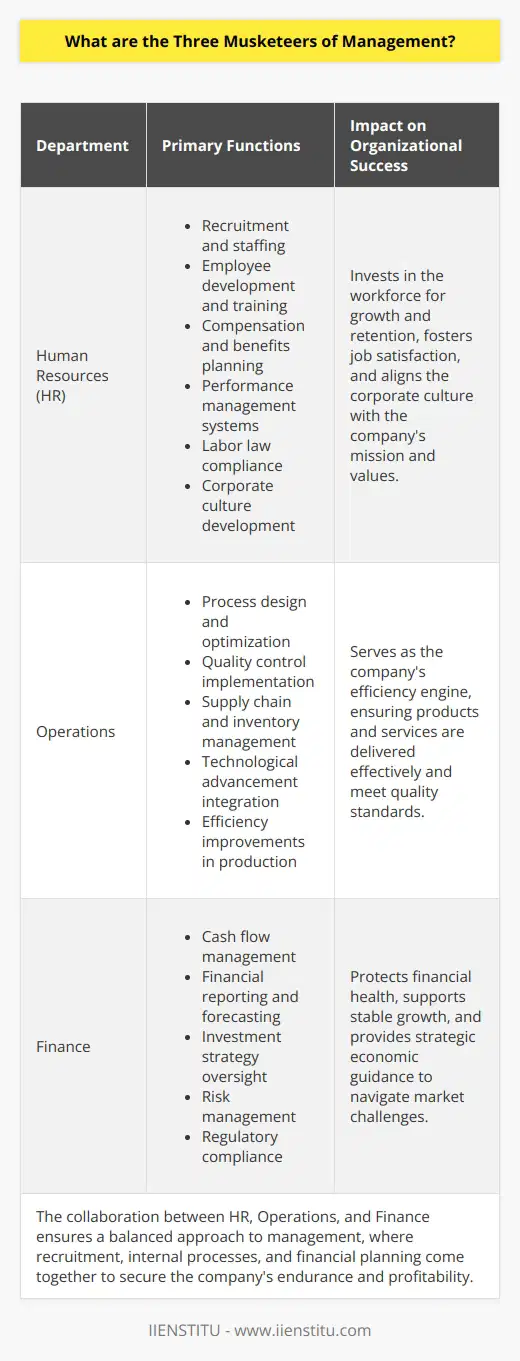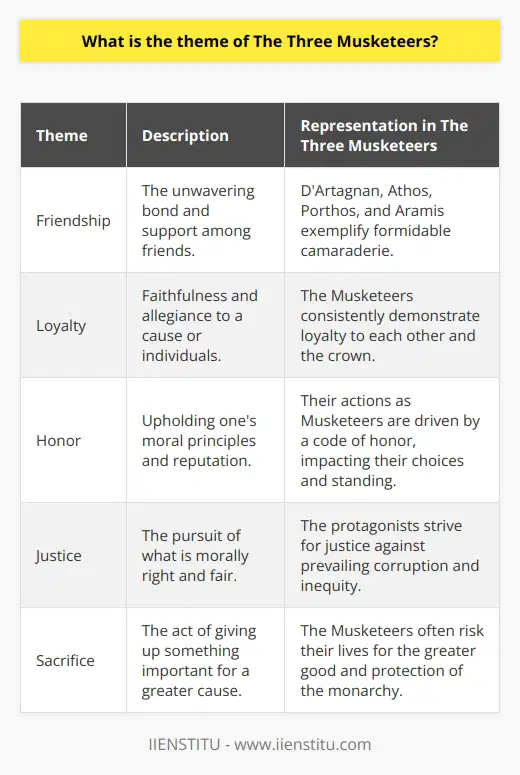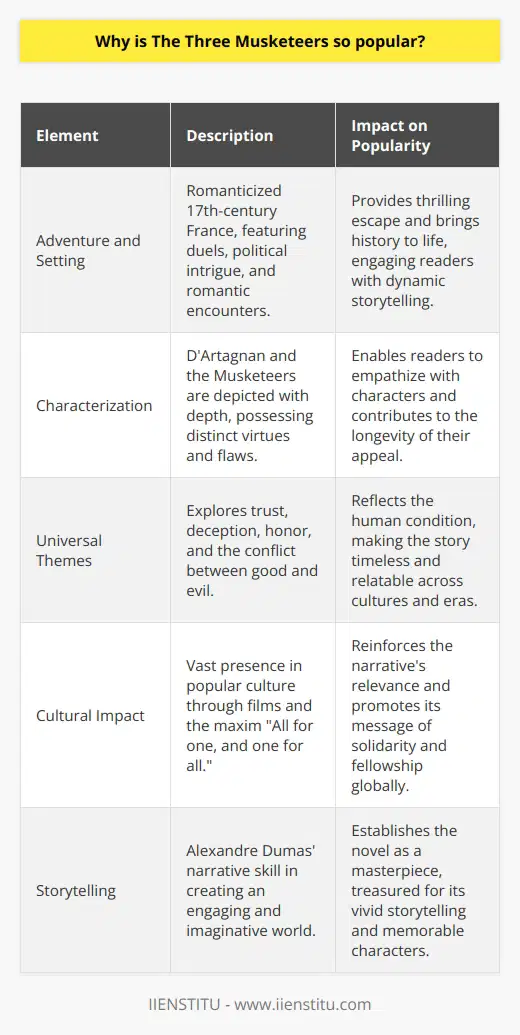
When it comes to management, there are three essential players: human resources, managers, and employees. Together, these three groups make up what can be referred to as the "human resources management system." To effectively manage a team or organization, all three groups need to work together harmoniously.
Human Resources
The human resources department is responsible for various tasks, all of which protect the company's most valuable asset: its people. For example, the human resources department hires and trains employees, designs compensation and benefits packages, and creates and enforces policies to keep employees safe and productive. In short, the human resources department exists to support employees and help them be as successful as possible.
Managers
Managers are the link between senior leadership and front-line employees. The manager's job is to ensure that employees have what they need to do their jobs well and meet (or exceed) expectations. This includes everything from providing adequate resources to offering feedback and guidance. For a company to run smoothly, managers must be able to communicate effectively with both their direct reports and their superiors.
Related Course: Leadership Course
Employees
Of course, no company would be able to function without its employees. Employees are the heart and soul of any organization; they are the ones who do the work that keeps the company running. Without employees, there would be no products or services to sell! Companies need to remember that their employees are not just cogs in a machine; they are real people with several needs (physical, emotional, mental, etc.) that must be met to be productive members of the team.
Management is a complex process that requires all three of these groups to work together to be successful. If any group is not functioning correctly, it will have a negative ripple effect on the others. Companies can create an environment in which everyone can thrive by understanding the role that each group plays in the management process.

Frequently Asked Questions
What are the Three Musketeers of Management?
The Three Musketeers of Management refer to human resources, operations, and finance as critical components of any successful business. This trio of disciplines is often seen as being central to organizational strategy, meaning that human resources teams work to nurture and retain a talented workforce while also safeguarding employees' rights; operations managers make sure that processes are streamlined, efficient, and cost-effective; and finance experts ensure that the financial health of the business remains strong. By uniting these three disciplines into one cohesive unit, management can significantly influence employee engagement and organizational outcomes. From crafting compensation plans to fostering a healthy work culture, human resources personnel play an integral role in setting the tone for the entire organization. In turn, operations management focuses on efficiency and implementation by introducing new ways of doing things - from improving production cycles to aligning costs with revenues. Lastly, financial specialists oversee the company's capital flow and advise on investments, cash flow forecasts, budgeting exercises, and other economic activities. Human resources provide secure foundations for growth, operations usher in a more excellent structure, and finance ensures sound investments are made. These three musketeers remain core pillars within any modern management strategy.

Who are the Three Musketeers of Management?
The Three Musketeers of Management are Peter Drucker, Warren Buffett, and Jack Welch.
Peter Drucker was a business consultant and management theorist who is considered the founder of modern management theory. He wrote over 25 books on business and management, including "The Practice of Management" and "The Effective Executive".
Warren Buffett is an American business magnate, investor, and philanthropist who is considered one of the most successful investors in history. He is the chairman and CEO of Berkshire Hathaway, and his company has achieved an average annual return of 20% for shareholders over the past 50 years.
Jack Welch is an American businessman who was the chairman and CEO of General Electric from 1981 to 2001. During

What do the Three Musketeers of Management do?
The Three Musketeers of Management are responsible for setting the vision, developing and implementing strategy, and leading and managing people. They help to ensure that an organization is able to achieve its objectives and fulfill its mission.
The Three Musketeers of Management are often considered the most important members of an executive team or management committee. They help to guide an organization in the right direction and make sure that it is on track to achieving its goals.

How can the Three Musketeers of Management help me reach my goals?
The Three Musketeers of Management—planning, organizing, and controlling—can help you reach your goals by providing a framework for achieving them. Planning involves setting goals and developing strategies to reach them. Organizing involves grouping tasks and resources to help achieve the goals. Controlling involves monitoring progress and making adjustments to ensure the goals are met. By using all three of these management techniques, you can better ensure that you are taking the necessary steps to reach your goals.

What roles do the Three Musketeers of Management play in successful management teams?
The Three Musketeers of Management are the three key roles that successful management teams need to succeed: the Planner, the Implementer, and the Monitor. The Planner sets the overall strategy, mission, and vision for the organization. The Implementer is responsible for carrying out the plan and making sure that it is implemented effectively. The Monitor is responsible for evaluating the success of the plan and making necessary adjustments to ensure the organization is achieving its goals.

How can I ensure that the Three Musketeers of Management are working together effectively?
Establish clear roles and responsibilities for each of the Three Musketeers.
Foster open communication and collaboration among the Three Musketeers.
Develop a plan for how each Musketeer will contribute to the team’s success.
Create regular meetings to discuss challenges and successes.
Set goals and objectives for the team, and track progress.
Encourage each Musketeer to take ownership of their role and responsibilities.
Celebrate successes and recognize individual contributions.

What is the meaning of The Three Musketeers?
The Literary Significance
The Three Musketeers, written by Alexandre Dumas in 1844, is a historical novel that interweaves a romanticized version of real events during the 17th-century French monarchy with the fascinating adventures of a fictional character named d'Artagnan and his friends, Athos, Porthos, and Aramis.
Symbolism of Brotherhood and Loyalty
One central theme in the story is the unbreakable bond of brotherhood among the titular characters. The famous phrase, 'All for one and one for all,' exemplifies their undying loyalty to each other and willingness to support one another in their quests for justice, honor, and love. This theme resonates with readers as it showcases the power of friendship and camaraderie beyond differences in social class, background or personal challenges.
Exploring Social, Political, and Moral Context
The novel also serves as a commentary on social, political, and moral issues of the time. Dumas explores the disparity between the aristocracy and the common people, highlighting how the musketeers, despite being involved in political intrigue, still exhibit qualities of chivalry and honor. Additionally, the novel's setting during the reign of Louis XIII and the Cardinal Richelieu era allows for an examination of the power dynamics between the monarchy, the clergy, and the military.
The Role of Women in 17th Century France
Another notable aspect of The Three Musketeers is the presence of strong female characters who defy societal expectations. Examples include the powerful and cunning antagonist Milady de Winter and the supportive love interests Constance and Queen Anne. Through these characters, Dumas emphasizes the struggles and triumphs of women in a predominantly male-dominated society.
The Enduring Legacy
In conclusion, The Three Musketeers not only presents a captivating story of adventure, romance, and friendship but also delves into complex themes and social issues that continue to resonate with contemporary audiences. The novel teaches valuable lessons about loyalty, honor, and perseverance while providing a lens to understand the historical context of 17th century France. This enduring appeal has led to numerous adaptations and retellings, securing the timeless significance of Dumas' masterpiece.

What is the theme of The Three Musketeers?
The Central Theme of The Three Musketeers
Plot Analysis
The theme of The Three Musketeers, a 17th-century French novel written by Alexandre Dumas, is centered around friendship, loyalty, and honor. Set against the backdrop of political intrigue, the story follows the adventures of a young man named d'Artagnan and his three loyal friends – Athos, Porthos, and Aramis, collectively known as the Three Musketeers.
Friendship and Loyalty
The novel showcases the deep and unwavering bond between d'Artagnan and the Musketeers. Despite the barriers of social class and various challenges encountered, the four characters are consistently loyal to one another. Their famous motto, 'all for one, and one for all,' demonstrates the strength of their friendship; they are willing to risk everything to support and protect one another, even in the face of danger or overwhelming odds.
Honor and Chivalry
The theme of honor and chivalry is exhibited through the actions and beliefs of the characters. As Musketeers, Athos, Porthos, and Aramis uphold a code of conduct reflective of the larger values of the society in which they live. They serve the king and queen, devote themselves to seeking justice, and embody the ideals of courage and bravery.
Justice and Sacrifice
Dumas also explores themes related to justice and sacrifice within the political framework of the era. The narrative portrays the Musketeers as defenders of justice, while they navigate a world where corruption and treachery are prevalent. In doing so, the characters are often forced to make personal sacrifices for the greater good. This includes risking their lives for their king and country, demonstrating their unwavering commitment to their duties and ideals.
Conclusion
In summary, the theme of The Three Musketeers revolves around the virtues of friendship, loyalty, and honor as embodied by the characters of d'Artagnan, Athos, Porthos, and Aramis. The novel highlights the importance of these values as the protagonists navigate the treacherous landscape of 17th-century France, ultimately standing as a testament to the power and resilience of true camaraderie.

Why is The Three Musketeers so popular?
Enduring Appeal of Adventure
The continued popularity of The Three Musketeers stems primarily from its captivating narrative filled with adventure and action. Alexandre Dumas created a literary classic in 1844 through skillful storytelling, allowing the story to resonate with generations of readers. The tale, which follows the swashbuckling escapades of young D'Artagnan and his merry band of Musketeers, explores themes of heroism, friendship, and honor.
Rich Characterization and Timeless Themes
As Dumas meticulously crafts the characters with their unique personalities, readers find themselves attached to the protagonists. The camaraderie among D'Artagnan, Athos, Porthos, and Aramis forms the backbone of the relations within the story, rendering it relatable and endearing. Moreover, the themes of loyalty, romance, and betrayal, intertwined with the historical context of 17th-century France, contribute to the novel's enduring popularity.
Influence on Popular Culture
The Three Musketeers has transcended the world of literature to establish itself as a pervasive force in modern popular culture. Through numerous adaptations across various media platforms, such as film, television, and theatrical productions, the story continues to attract new fans. The iconic catchphrase, 'All for one, and one for all,' has permeated popular consciousness, representing unity and collaboration in the face of adversity.
International Appeal
The novel's popularity extends beyond the boundaries of France, having been translated into multiple languages and embraced by readers worldwide. This international recognition is a testament to Dumas' ability to create a story that transcends cultural barriers, making it truly universal in its appeal. Furthermore, the classic adventure formula employed in The Three Musketeers has influenced countless other works, proving its timeless and influential nature.
Conclusion
In conclusion, the timeless appeal of The Three Musketeers is attributed to its masterful storytelling, rich characterization, exploration of universal themes, and pervasive influence in popular culture. As readers continue to engage with this classic tale, the legacy of D'Artagnan and his fellow Musketeers endures, solidifying its status as a popular and enduring work of literature.



